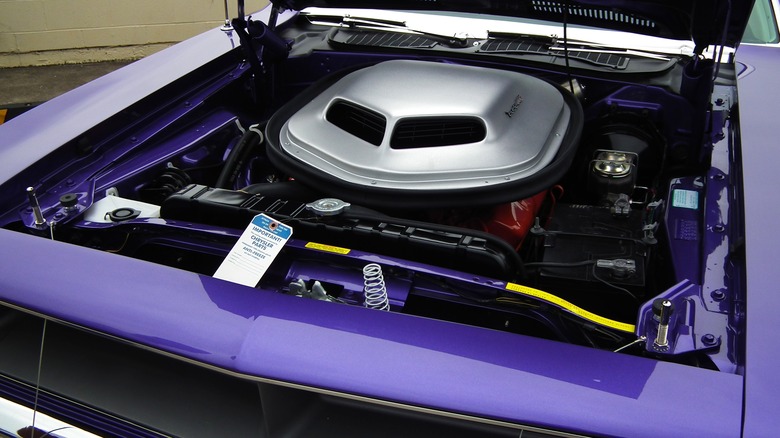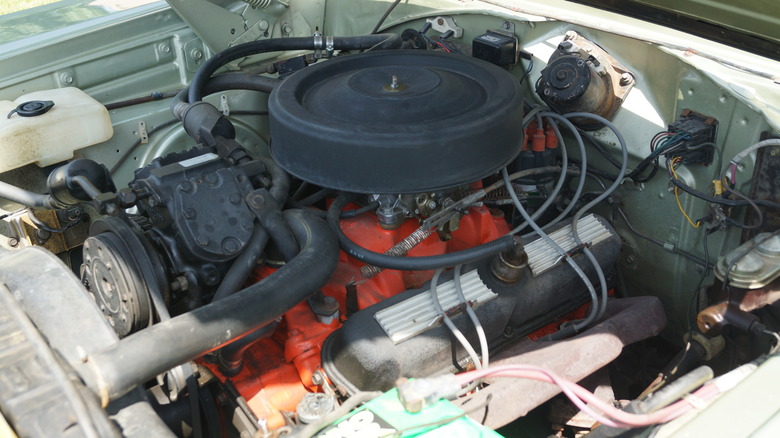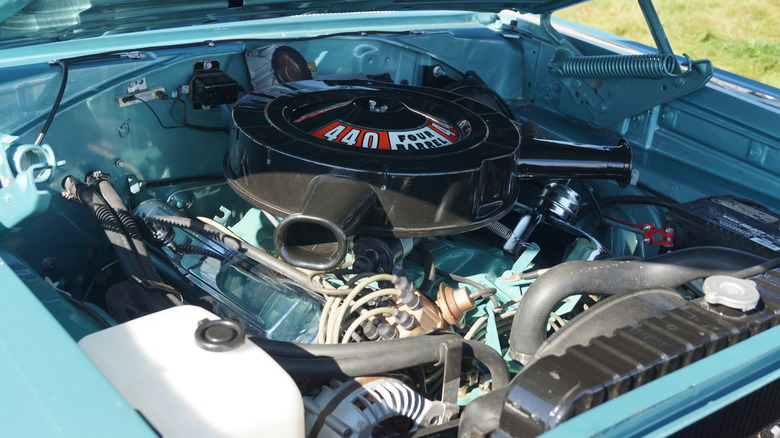Mopar 440 Vs 440 Magnum Engines: What's The Difference?
For a substantial number of engines made over the course of automobile history, most of them bear the name of the car company that produced them, like Chevrolet or Ford. After all, it makes it easy to remember which engine goes with which vehicles. However, there is a major automotive parts company that does not directly bear the name of the recognizable brand that it supplies those parts to. That company would be Mopar, which is the parts division for Stellantis. If that second name isn't familiar to you, it is the company that owns the car brands Chrysler, Dodge, Jeep, and many more. The name Mopar is short for "Chrysler Motor Parts Corporation."
Mopar engines for Chrysler go back many decades, but in the heyday of the muscle car — the late 1950s to the early 1970s — Mopar had quite a lot to offer in terms of power. This was particularly true with its line of big block engines, or B and RB engines. This was a line that began in 1958 and lasted for 20 years, with the largest hitting the market being the Mopar 440 in 1966. However, there was not just one version of this 7.2L V8 engine available. There was also one known as the 440 Magnum. While they are roughly the same engine, one is going to get you a bit more power than the other.
[Featured image by sv1ambo via Wikimedia Commons | Cropped and scaled | CC BY-SA 4.0]
What is a Mopar 440?
The Mopar 440 fell into the RB category of the big block engines. This means that it was built with a raised block that was taller than the standard B big block from the company. It was built with a cast iron block and was an evolution of the design for the Mopar 413 V8, which saw its production cease the year before the 440 hit the market. That engine was then bored out to 4.32 in., an increase from the 4.1875 in. bore on the 413. Your standard issue Mopar 440 was able to generate a rather impressive 350 hp and 480 lb-ft of torque.
You could put the Mopar 440 in a wide variety of vehicles across many of the different companies that Mopar supplied its parts to. From the Chrysler Newport to the Dodge Coronet to the Plymouth Road Runner, the Mopar 440 found a home in muscle cars, luxury vehicles, station wagons, and more. Its size and power made it very enticing, but the Mopar 440 could actually get even more powerful.
[Featured image by Greg Gjerdingen via Wikimedia Commons | Cropped and scaled | CC BY 2.0]
What is a Mopar 440 Magnum?
There ultimately is very little difference between the Mopar 440 and the Mopar 440 Magnum. The Magnum designation simply meant that it was the high-performance version of the V8 engine. An important note is that this also meant it was in a Dodge vehicle. Different brands within the overall company used different designations to signify this. Chrysler called this engine the TNT, whereas Plymouth called it the Super Commando. The Mopar 440 Magnum was able to increase the engine's output to 375 hp with the same level of torque. Over the following years, Mopar increased those Magnum numbers even more to 390 hp and 490 lb-ft of torque. The 440 was a four-barrel engine, but Mopar also created a six-barrel version of the Magnum called the Six Pack that allowed for these power increases.
Horsepower ratings were altered in 1972, reflecting a more realistic snapshot of an engine's capabilities, and this saw the Mopar 440 re-rated to 225 hp. That isn't terrible by any means, but it's a much less exciting number than before. Mopar ceased production of these engines in 1978, along with all the other B and RB engines. The 1970s saw the end of so many different engines due to new emissions restrictions and an oil crisis, and the Mopar 440 — along with the Magnum — wouldn't find a path in the new era.
[Featured image by Greg Gjerdingen via Wikimedia Commons | Cropped and scaled | CC BY 2.0]


